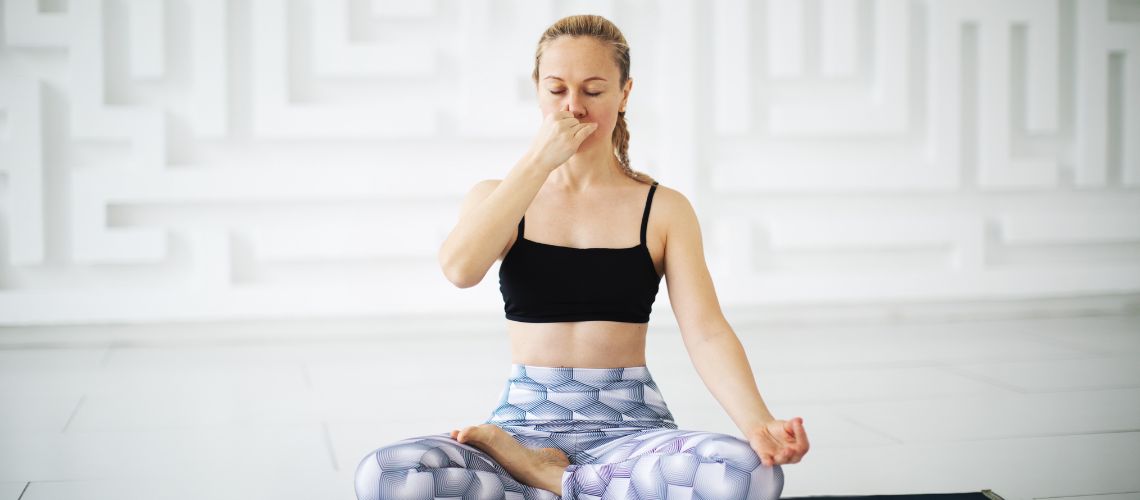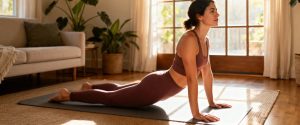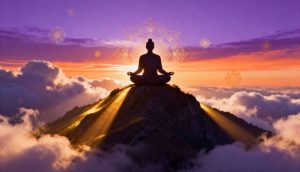What is Pranayama?
The Pranayama is a practice from the yoga tradition that focuses on conscious control of breathing. Its name comes from Sanskrit: “prana”, which means life energy, and “ayama”, which translates to expansion or control.
Through different techniques, Pranayama seeks to regulate the flow of energy in the body, helping to calm the mind, improve concentration, and foster inner connection. It is much more than breathing; it is a tool to live with more balance and clarity.
Do you feel stressed or anxious? With just a few minutes of daily Pranayama practice, you can experience a sense of deep peace and improve your physical and mental well-being. It is simple, accessible, and suitable for everyone.

What does pranayama mean?
Beyond being just a technique of breath control, Pranayama is the art of regulating the flow of prana, the vital energy that sustains the body and mind. In the tradition of yoga, it is considered a key tool for purifying the organism and expanding consciousness.
The word Pranayama not only implies breathing better, but also controlling and expanding internal energy. In the classical texts of yoga, such as the Yoga Sutras of Patanjali, it is mentioned that through mastery of breath, one can calm the mind and prepare the body for deep meditation.
Each inhalation, exhalation, and retention of air in Pranayama has a purpose: to activate the nervous system, balance emotions, and harmonize the body with the mind. Its practice not only improves physical health but also allows reaching a state of mental clarity and inner connection.
Benefits of pranayama
When we take control of our breathing, we can stay in the present moment, increase our self-awareness, and have a sense of calm.
Pranayama not only improves your breathing; it transforms your body, mind, and spirit. Using complex rhythms and techniques to offer us various mental, emotional, and physical benefits; it is much more than just the simple knowledge of breathing. Here are some of its main benefits:
- Reduction of stress and anxiety: Controlling breathing helps calm the nervous system, reducing stress and promoting a sense of inner peace.
- Improvement of physical health: A By better oxygenating your body, Pranayama strengthens the lungs, improves circulation, and reinforces the immune system.
- Greater energy and vitality: Breathing techniques revitalize your body, increasing your levels of energy and focus.
- Improve sleep quality: Practicing Pranayama before sleep calms the mind, helping you to fall asleep faster and deeper.
- Strengthens the mind: It promotes concentration, mental clarity, and emotional control, helping you to be more present in your day-to-day life.
- Inner connection: By practicing it regularly, Pranayama promotes a state of balance and harmony, helping you connect with your inner self.
- Natural detox: Deep breathing techniques eliminate toxins from the body, promoting a feeling of lightness and overall well-being.
- Preparation for meditation: It is an ideal tool for calming the mind and entering deeper states of meditation.
3 tips to start with Pranayama
- Find a quiet and comfortable space: Look for a place where you can be in silence and without distractions. Sit in a comfortable position, whether on the floor with your legs crossed or in a chair, but make sure to keep your back straight and relaxed. A serene environment will help you connect better with your breathing.
- Start with simple and conscious breaths: Do not rush to learn advanced techniques. Start with slow and deep breaths: inhale through your nose, fill your lungs, and exhale gently. Focus on feeling how the air enters and leaves your body. This will help you become familiar with the practice and calm your mind.
- Be consistent, but start slowly: Dedicate about 5-10 minutes a day to practice Pranayama. You don’t need long sessions at the beginning. The important thing is to create a habit and gradually increase the duration. The key is in regularity, more than in intensity.

Why practice it before the yoga class?
Practicing Pranayama before a yoga class is like opening a door to a deeper and more meaningful experience.
By controlling your breathing before you move, you calm the mind and create a state of presence that helps you connect with your body in a conscious way. It is a moment to leave out distractions and focus on the here and now.
Additionally, Pranayama prepares your body from the inside. Oxygenates the muscles, improves circulation, and activates your vital energy, making each posture and movement you will perform in your practice easier.
By breathing consciously, the movements feel more fluid and synchronized, as if your whole body and mind were working in harmony.
Finally, this practice also sets the emotional and mental tone for the session. With just a few minutes of conscious breathing, you can align your intention for the class, whether it’s seeking calm, strength, or balance.
It is the perfect bridge between your daily life and the sacred space you create on your mat.
6 Pranayama techniques you can try
You can try them, but we suggest that you practice Pranayama under the guidance of a trained instructor. At any time of the day, you can perform these pranayama exercises, ideally on an empty stomach.
Bhastrika
Low energy levels? Quickly and powerfully, the three rounds of Bhastrika Pranayama (Bellows Breath) elevate vitality and relax the mind.
- Inhale and exhale vigorously.
Bhramari
Is the activity humming in your mind? Can’t stop worrying about what someone told you? Find a quiet corner and try the brakes in the buzzing mind of the sound of the bee (Bhramari Pranayama).
- Inhale deeply and then make the buzzing sound as you exhale.
- For those with hypertension, this breathing strategy is particularly useful.

Kapalabhati Pranayama
Kapalabhati practitioners believe that this breathing technique can help remove mucus from the airways, relieve inflammation, reduce swelling, and increase lung capacity.
Kapalabhati is an invigorating technique that can create heat in the body. If you feel cold or lethargic, Kapalabhati is pleasant to do in the morning.
When you feel congested or bloated, you can practice it, but do not attempt it on a full stomach. If you are pregnant or suffer from blood pressure problems or heart issues, avoid this procedure.
- Start by sitting upright in a comfortable position, and exhale.
- Inhale briefly through both nostrils, then exhale sharply (through the nose again) while pushing the belly button towards the neck.
- The exhalation is short and quick, while the inhalation is short and passive, but very active.
- Once again, as you exhale, pull the navel in and soften it as you inhale.
- Take a round of 30 (counting the exhalations) with some deep breaths in between and rest for a minute.
- Just repeat. Start with 15 if this seems exhausting and gradually increase.
Sitali Pranayama
Sitali also means cooling, which describes the effect it can have on your mind and body. This breath helps to clear heat with coolness. Do it during the summer and in warm climates.
Sitali is a perfect tool to try to cool down and relax if you feel overheated, irritable, or find yourself impatiently waiting in hot weather!
- Roll your tongue into a tube until the outer edges touch. If you can’t roll your tongue, use your mouth to make an oval shape to keep your tongue flat.
- Through your mouth, inhale, take in as much oxygen as you can. You may need to make a hissing sound.
- Bring the tip of your tongue to the roof of your mouth after inhaling and close your lips.
- In your mouth, feel the coolness of your inhalation and then exhale through your nose.
- Repeat the process five to ten times, or as many times as possible.
Nadhi Sodhana aka Anuloma Viloma
Nadhi sodhana is a very comfortable and balanced breathing technique, also known as alternate nostril breathing, which is used to help calm the nervous system and helps to fall asleep at night.
It is supposed that by increasing the amount of oxygen that enters the body, this breathing also purifies the blood, relaxes the mind, decreases tension, and promotes concentration.
Nadhi Sodhana is a constant and relaxing breath that can be done at any time of the day. When you are anxious, nervous, or having trouble sleeping, consider using this strategy.
You can do Nadhi sodhana sitting or lying down.
- Start by emptying all the air from your lungs.
- Block your right nostril with the thumb of your dominant hand and only inhale through your left nostril. Make sure to inhale into your stomach, not into your chest.
- Close your left nostril with the ring finger of the same hand while you are filled with air, keep your right nostril closed and hold your breath for a moment.
- Then release the thumb and exhale only through the right nostril.
- Make sure to exhale all the air from the right side and pause on the same side before inhaling again.
- When you have inhaled through the right side and exhaled through the left, close both nostrils. Inhaling and exhaling through both nostrils is part of a complete breathing cycle.
- You can take a four-count inhalation if you are just starting, holding your breath for four to eight counts, and then exhale for four counts.
- Do up to ten cycles and observe how your body reacts.

Ujjayi Pranayama
Uayi means victorious breathing; due to the sound you make, it is often called ocean breath. In the practice of asanas, this breathing is often used, especially in ashtanga and vinyasa classes.
Ujjayi advocates for the complete expansion of the lungs, and it will help you relax the mind by focusing attention on the breath. Do it at any time of the day, this breath can be practiced for up to 10 minutes. Try it also for an asana training.
- Find a position where you feel your spine straight and are comfortable with yourself.
- Breathe in firmly through both nostrils. Inhale until you reach your maximum lung capacity; keep your spine straight.
- Hold your breath for a second, then, as if you are about to whisper a secret, constrict some of the breath at the back of your throat and exhale slowly through both nostrils.
- This exhalation sounds like an ocean wave or a gentle breeze.
- When you exhale, you can feel the air at the top of your mouth.
- Do it up to 20 times.
Precautions
Although practicing Pranayama properly is generally safe, it is not without risks. Beginners should avoid advanced techniques and focus on basic exercises that match their abilities. Additionally, it is important to consider the functional limitations of each person and practice mindfully.
According to a recent study, Pranayama was the yoga activity that caused the most injuries, with four reported cases in a sample of 76 practitioners.
Although severe adverse effects, such as bruising or pneumothorax, are rare, they have been documented in isolated cases, although the links are not always completely established.
You should avoid this practice if you are pregnant or have conditions such as diabetes, high or low blood pressure, heart conditions, epilepsy, or vertigo. In these cases, it is essential to consult a doctor before performing breathing exercises.







